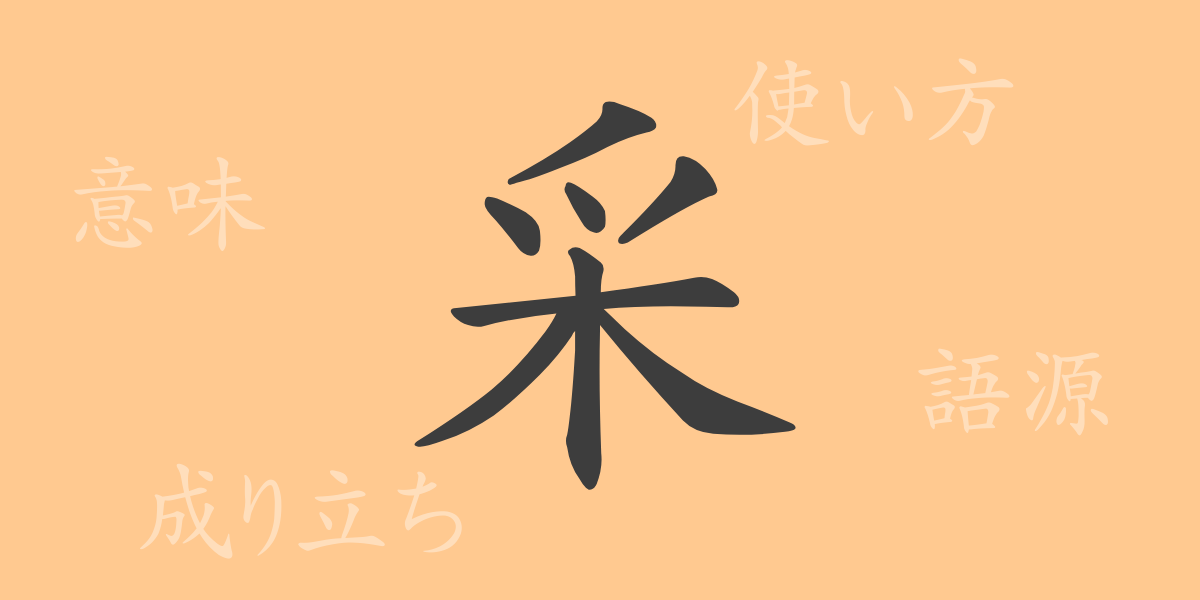Japanese written culture is profound, with each kanji having a background and meaning that significantly impacts Japanese life and spirituality through its use. This time, we spotlight the less commonly seen common-use kanji “采” (sai), exploring its origins, meanings, usage, and idioms, delving into the fascinating world of this kanji.
Etymology of 采 (sai)
The kanji “采” (sai) has existed in China since ancient times, originally developing from a pictograph representing the act of picking grass by hand. Its form and meaning have evolved over time to signify harvest and color, intertwining with various cultural elements. This kanji symbolizes the act of humans receiving nature’s bounty and the resulting beauty.
Meanings and Usages of 采 (sai)
The kanji “采” (sai) holds meanings such as “color,” “appearance,” and “features.” It also relates to actions like “to pick,” signifying harvesting or choosing. Despite its varied meanings, “采” (sai) consistently embodies the core idea of selecting something and representing beauty and color. Its usage changes depending on context but always retains these essential themes.
Reading, Stroke Count, and Radical of 采 (sai)
The reading and basic information of the kanji “采” (sai) are as follows:
- Reading: In the on’yomi reading, it is read as “サイ” (sai), and in the kun’yomi reading, it is read as “いろどり” (irodori).
- Stroke count: It consists of 8 strokes.
- Radical: The radical is 釆部 (nogomehen).
Idioms, Phrases, and Proverbs Using 采 (sai) and Their Meanings
There are several idioms, phrases, and proverbs in Japanese that include “采” (sai). For example, “采配を振るう” (saihai o furuu) means to command or direct, and “風采がいい” (fusai ga ii) describes someone with a beautiful appearance or demeanor. These expressions reflect the meanings of “appearance” and “beauty” associated with “采” (sai), conveying its nuance through language.
Conclusion on 采 (sai)
The kanji “采” (sai) has been passed down as a symbol of the relationship between nature and humans and the expression of beauty, through its form and meaning changes. Today, it shows its presence in specific idioms and expressions, contributing to the richness of Japanese language expression. Understanding the history and culture embedded in each character is a crucial step towards using words more deeply and richly.

























